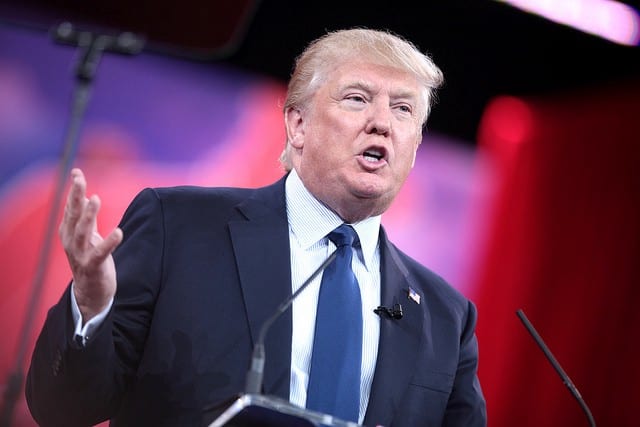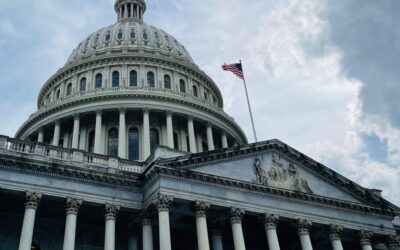The lessons from the Presidential Election are not hidden in age, gender, ethnicity or income.
Presidential elections are often reflective moments, and this years was no anomaly. The divide in this country has been under intense and growing scrutiny since the November 8th day of reckoning. Most of the discussions theorized that the older, rural, white disenfranchised voters motivated by aggressive protectionism for some long lost American greatness delivered Donald Trump to the presidency.
At its heart have been questions as to the contribution of the isms to this characterization; Racism, Sexism, Nationalism. This has prompted questions such as “Where did the African American vote go? How could any women abandon Hillary? What happened to the Latino Revolt?”
A New Segmentation Model
All of this raises questions as to the underpinnings of our conventional analyses of presidential elections. Most use traditional segmentation models based upon historical behavior patterns to predict future outcomes; I.e. voting patterns. Traditional bucketing of people have always relied on the obvious observable traits of age, gender, ethnicity with qualifiers such as income, education and region often added.
Differentiating people by these characteristics can uncover real differences in their behavior. This does not, however, shed any light on why these behaviors occur. We are left to infer causes which have swung widely across the spectrum from being inherently deplorable to virtuously speaking truth to power.
The Power of The Brain
Advances in behavioral, neural and data science, however, have provided us with new and different means of grouping people around new classes of descriptors. We are now able to cluster people via their biologic instincts that are resident in the deep nonverbal part of the brain.
This part of the brain catalogues our affinities, attachments and moral judgements and serves them up every time we have a gut reaction to anything. These are more foundational than age, gender and ethnicity. In fact these instinctive clusters are found in all ages, genders and ethnic groups.
We can now understand why these clusters of people vote as they do thus improving our capability to anticipate and predict new patterns.
It reveals why people do things not just what they do.
When these instinctive clusters are used, the optimal words, images and themes that trigger instinctive alignment can be identified and used to anticipate and influence future behaviors. Ultimately it is the cluster of instincts not age, gender or ethnicity that predicts and underscores ones vote.
These clusters do not negate the influence of age, gender and ethnicity, but rather provide a more foundational variable that informs those experiences and have not been available to analysis.
Consider how these Clusters organize across population of eligible voters: Caucasian, African American, Hispanic and Asian groups.
Each subpopulation has a full representation within all five Clusters. Amplitudes may vary, but each Cluster is present within each sub group. This implies that there is an interaction effect between the Cluster impact and ethnicity that is not captured when instincts are ignored.
These biologic orientations help to shape the world view, affinities and judgments that each group makes. This may be the source of the noise in much of the traditional post election analyses because they only rely on observable descriptors and past behaviors.
Generic Presidential Election Voters
Now consider how generic Republican, Democrat and Independent voters are described within this clustering model. It is clear that there is a distinctive pattern of appeal for each group of voters.
The Republican profile is led by a dominant appeal from Cluster 3 (Social Binding), the Democrat by Cluster 2 (Individuist) and the Independents are fairly evenly spread across all clusters.
The profiles for each voter group are an amalgam pulling from each cluster and are expressions of their world views. These are reflected in the words, images and themes that are used to define each of them. These are the triggers that stimulate the instincts that confirm when a party is aligned with a voter.
These triggers represent some very fundamental differences in the orientations of each voter group. Republicans instinctively have a high regard for hierarchical order, traditions, have a sensitivity toward external threats along with being aware of, and influenced by individual differences. Democrats tend to be organized around the instinct to focus upon individuals as the unit of concern. Variety, newness and a resistance to social conformity are also commonalities. As expected, Independents tend to span the continuum.
The Community of Trump
The question now begged is how is the Trump support organized? Is there a distinctive pattern? Does it cross demographic lines? This Trump Effect shows that his primary support came from three of the clusters. Cluster 0 (Bound) which nationally represents roughly 14% of the population, Cluster 1 (Centrist, 36%) and Cluster 3 (Social Binding, 15%).
All of these share a reliance on the intuitions of hierarchical authority, strong between group boundaries and a sensitivity to external threats. Consider the Trump voter pattern below.
This general market pattern held up even within sub-populations based on age, gender income or ethnicity.
Consider the next representation of his appeal amongst women voters across different ethnicities. The amplitudes varied but the pattern of appeal did not.
The Trump Effect
The development of any group has long been understood to follow predictable patterns of assemblage. When building a community of support it is important to understand the level of intensity of each segment. In short, who are the true believers that will attest to the authenticity of the movement as the community grows.
To grow a mass appeal community of substance and stability this evolutionary process is typical. If a mass appeal is attempted with out accounting for these tiers of support, they tend to crumble as most fads fade from sight.
Regarding the Trump Effect the order of intensity goes from Cluster 3 (Social Binding) to Cluster 0 (Bound) to Cluster 1 (Centrist). The largest number of votes came from Cluster 1 but the highest percentage of any Cluster was from Cluster 3.
The Anatomy of a Presidential Election
The campaign that the Trump team executed was a prime example of instinctive triggering. His campaign did not focus on the what of policy, regulations or laws to enact. Mrs. Clinton, by contrast was acknowledged to have a real advantage when it came to how government works and the policies she would implement. Mr Trump did not make empathic pronouncements but rather demonstrated his empathy. His rants and provocative statements proved to his followers that he understood them because that is, in reality, what they would love to say to the Washington power brokers that have ignored them for decades.
An Alignment of World views in Presidential Elections
By demonstrating his alignment with these clusters, he secured the benefit of not having to gain their approval for specific policies, initiatives or laws. When one is engaged at the instinctive level, inconvenient inconsistencies are easily forgiven and explained away. In many ways, President Obama has a similar relationship with a different set of cluster inspired voters. Mr Trumps instinctive connection has motivated his followers to provide an authentic base of support.
The outsized demand for boundaries between Americans and others, the sensitivity to deceit and treachery and passion for the traditions of an idealized country certainly echoed with his rhetoric.
By demonstrating that he really understood this point of view there was no need to say I feel your pain. He channelled it in a very powerful manner.
This group is committed to a strong social binding instinct fueled by a clear eyed sense of us vs them and a hate for those that don’t play by the rules. In short, this is why the Clinton campaign’s belief that he would disqualify himself by using his words against him was a difficult sell to this audience.
The Challenge of Governing Post Presidential Election
As General Washington informs Alexander Hamilton in the Broadway play, “Winning was easy. Governing is harder” so now Mr. Trump moves toward this challenge. The question is, has Mr. Trump built a coalition that can claim to be a massive community that justifies the talk of a mandate to implement his point of view. There is some context that needs to be considered as a commentary on our elective process.
In a nod to Orwell, it does seem that there may be a conspiracy to disguise the state of our electorate. Often the public description of the presidential election electorate is based only on those casting votes. In this case, both candidates secured vote totals nearing 50% of the participating electorate. However, our participation rates are just in the neighborhood of 56% of the Presidential Election Voting Eligible Population (VEP). That makes the vote totals actually closer to 25% of the VEP. So when we convert the Trump community to a proportion of the total eligible presidential election voting population it looks like this:
The Anatomy of a Presidential Election Mandate
The voters totaling about 25% of the VEP is what Mr Trump is using to authorizes his “mandate”. This sits in opposition to the 75% of voters who did not cast votes for Mr Trump. This situation is not starkly different from when President Obama took office. He faced a similar mandate and a very resistant opposition party that blocked much of what he tried to enact.
If America was a company selling a product we might reason that we could expect real growth with 75% of the potential market unsold. In our county’s case we are selling participatory democracy. Mr Trump is now faced with a choice for governance. He might move to expeditiously impose his mandate on the 75% or he might seek to build a consensus for his principles of governing by convincing more of his countrymen to join him rather than resist him.
Historically most nascent administrations opt for the first choice.
It is interesting to ponder. We rail against the tribalism of today’s marketplace where we tend to seek out sources of information that only confirms our beliefs (inspired by our instincts) and use 25% mandates as a justification to impose governance from the edges of society.
Reverse the decline in Presidential Election Voter Participation
What might be the impact if we could reverse the decline in presidential election (and midterm) voter participation? What if more voters were required to judge and sign on to a candidate before they could claim a mandate?
Would those ideas migrate to a more centrist tone if we needed a coalition of 35% to win an election? Would governance be more moderate if more people were involved and approval would require a broader base of support?
Perhaps an elixir for our contentious landscape is to really sell our citizens on the virtues of participation. The extremes certainly benefit when participation rates are low since smaller and smaller pluralities determine the direction of the country.
The instincts of our country seems to be a vote that the direction of our country is not aligned with our countrymen and opting out seems to be winning. We all may benefit by the activation of more vibrant voices of our core precepts of the pursuit of life, liberty and the pursuit of happiness. A concerted effort to reclaim the mantel of the worlds greatest experiment in participatory democracy might be in order.
To quote Mr. Trump himself, “What do we have to lose?”

















